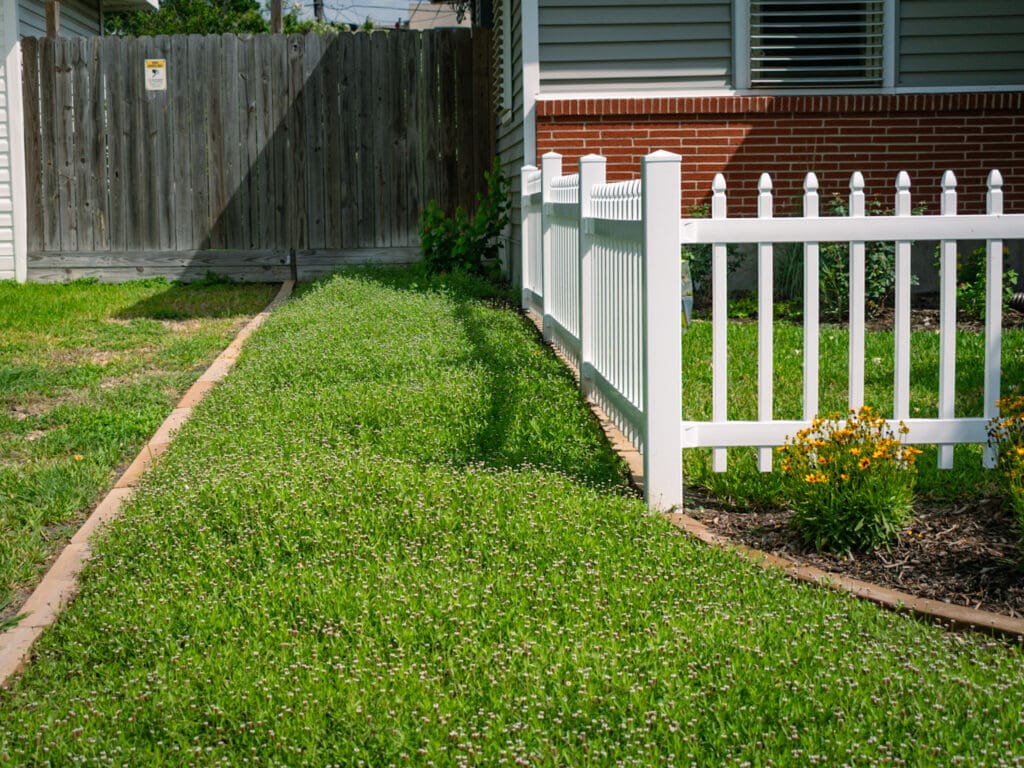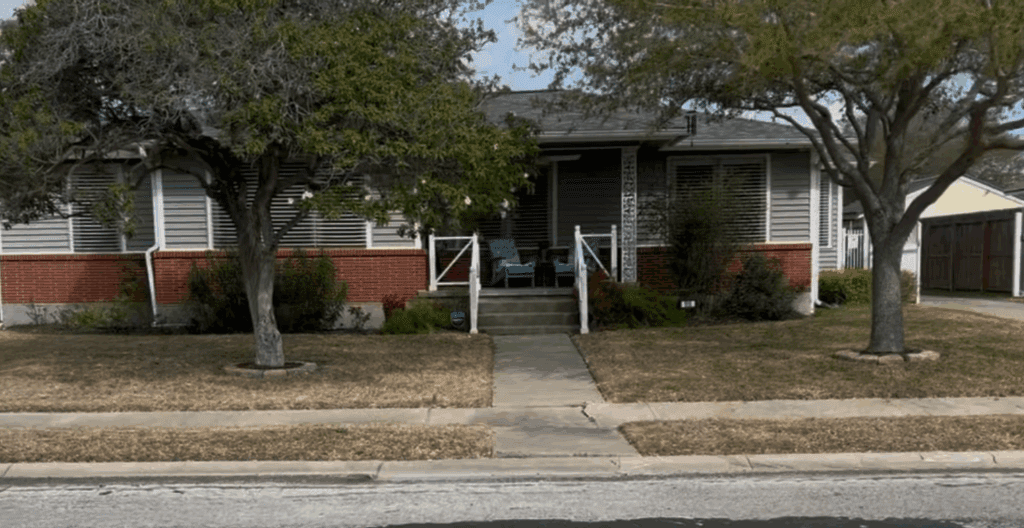Traditional St. Augustine or Bermuda turfgrass lawns can be nice if you use them a lot for sports and rolling around on. But the truth is, much of the time, lawns are mostly for show. Plus, they take a lot of time, effort, and water to maintain. Many folks are rethinking their lawn space for these practical reasons as well as the desire to attract and support pollinators. If you’re ready to un-lawn, we can certainly help with that! Take a look at these recent lawn replacement projects designed and installed by Gill’s Landscape Designer, Harry Villarreal using a wonderfully tough and ecologically beneficial Texas native plant…Frog Fruit!

On May 1, Harry and the Gill’s landscape crew stripped out what remained of a patchy turf lawn and planted a total of 1,332 small 4″ Frog Fruit plants across several large areas in this Ocean Dr. landscape. This is what it looks like just 8 weeks later! The clients were interested in bringing in bees and butterflies to their property, and they had these mostly unused areas that they wanted to put to work. They wanted something tough, cold hardy, salt-tolerant, low-water, and very low-maintenance for these ex-lawn areas that don’t get a lot of traffic. Perfect job for Frog Fruit!


Here are a couple of pics from planting day. We prepped the soil by doing a shallow 3″ till, then graded the areas to remove any dirt clods and achieve a smooth finish. We then top-dressed the areas with a thin layer of Nature’s Blend compost and a light sprinkling of Medina Growin’ Green fertilizer. Before planting, we applied a 2″ deep layer of natural hardwood mulch to the entire area. This makes planting very fast – just pull back mulch, dig a small hole, plant, and gently push the mulch back into place. The Frog Fruit runners have no problem rooting into the mulch, and the mulch helps prevent weeds from popping up while the Frog Fruit is getting established and helps with moisture retention. A good trick for getting even spacing on mass plantings like this is to use an 18″ piece of dowel rod or pvc to measure the space between plants as you go. Much easier than a tape measure!


At another property in the Corpus Christi bay area, Harry used 469 small 4″ Frog Fruit in dense shade under trees where turf grass struggles to perform. As you can see, the small Frog Fruit lawn is filling in nicely! Neither of these Frog Fruit lawn projects require any irrigation. Even if we hadn’t been getting any rain, it would be happy with the occasional gentle blessing of water from the hose. Compared to a turfgrass lawn, a Frog Fruit lawn uses almost no water.




These projects are proof that what some consider a weed can look elegant and beautiful in the right context! The bees, butterflies, and clients couldn’t be happier. Us too!




C. Rittgers says
What do you charge to plant frog fruit?
Gayle says
West Guth Park has loads of Frog Fruit growing throughout the park. It’s also full of small native plants and grasses that make a lovely blooming space!
Jesse Jenkins says
Thanks for sharing! We need to visit. Once you see frog fruit, you’ll start seeing it all over the place 🙂